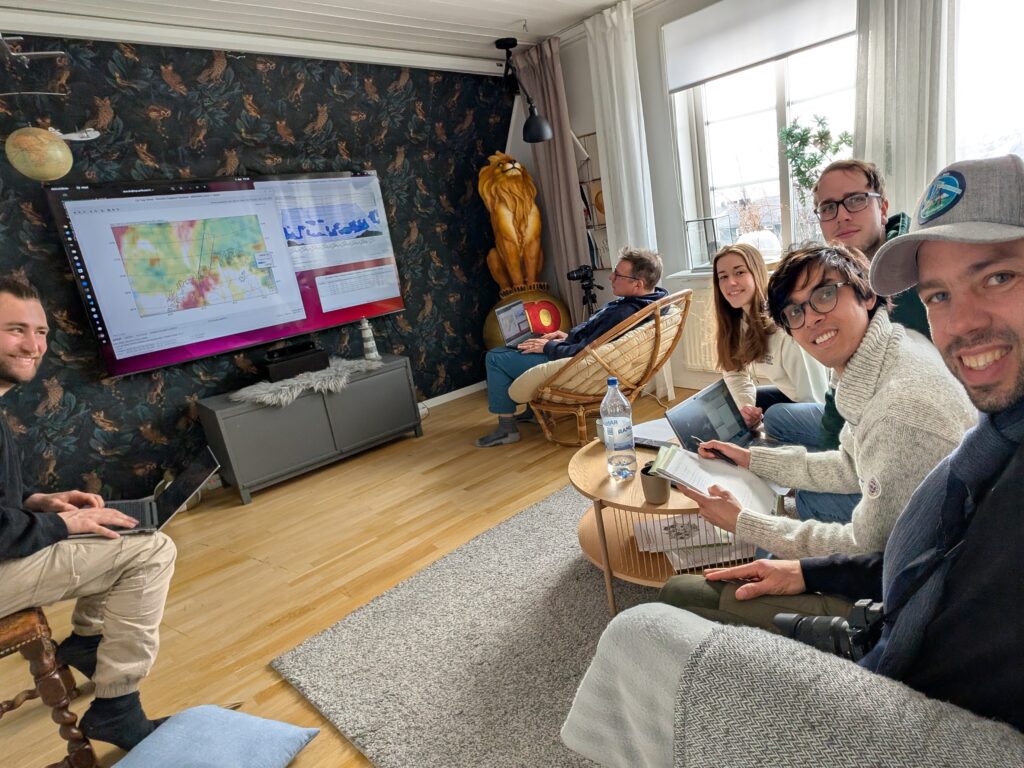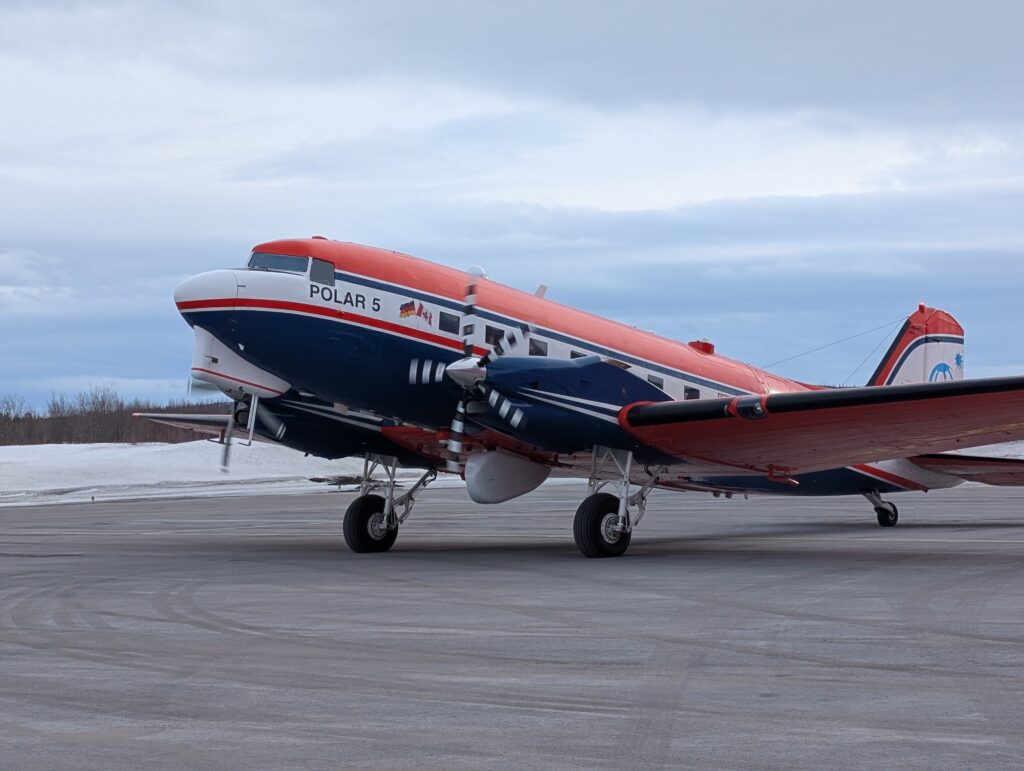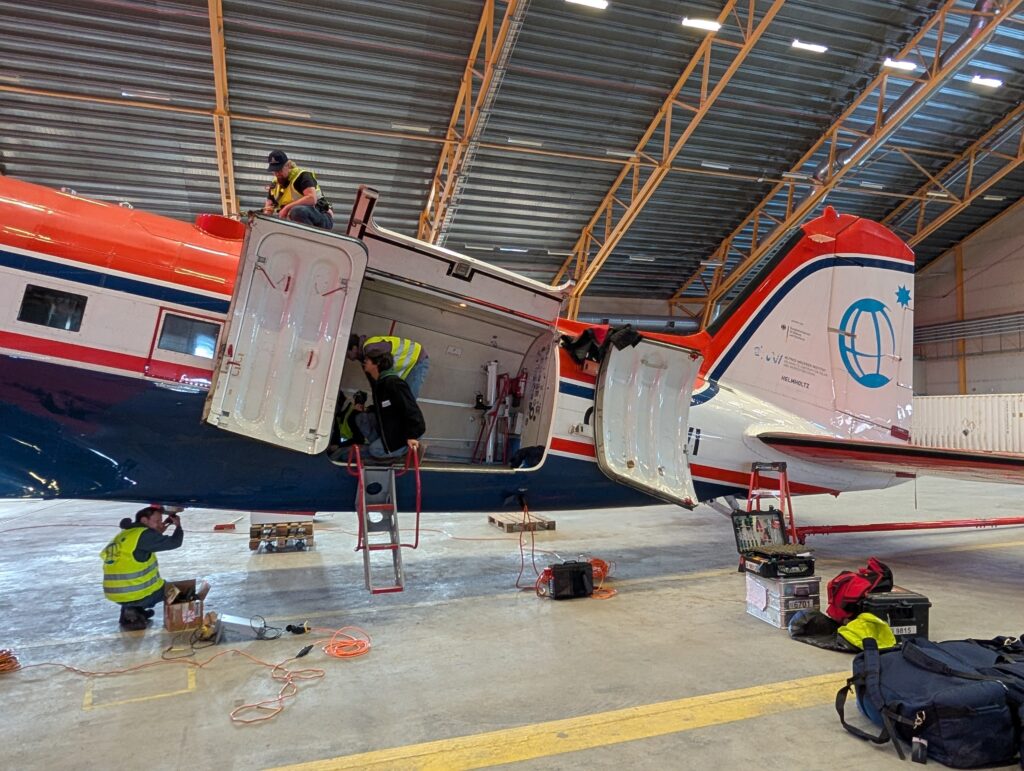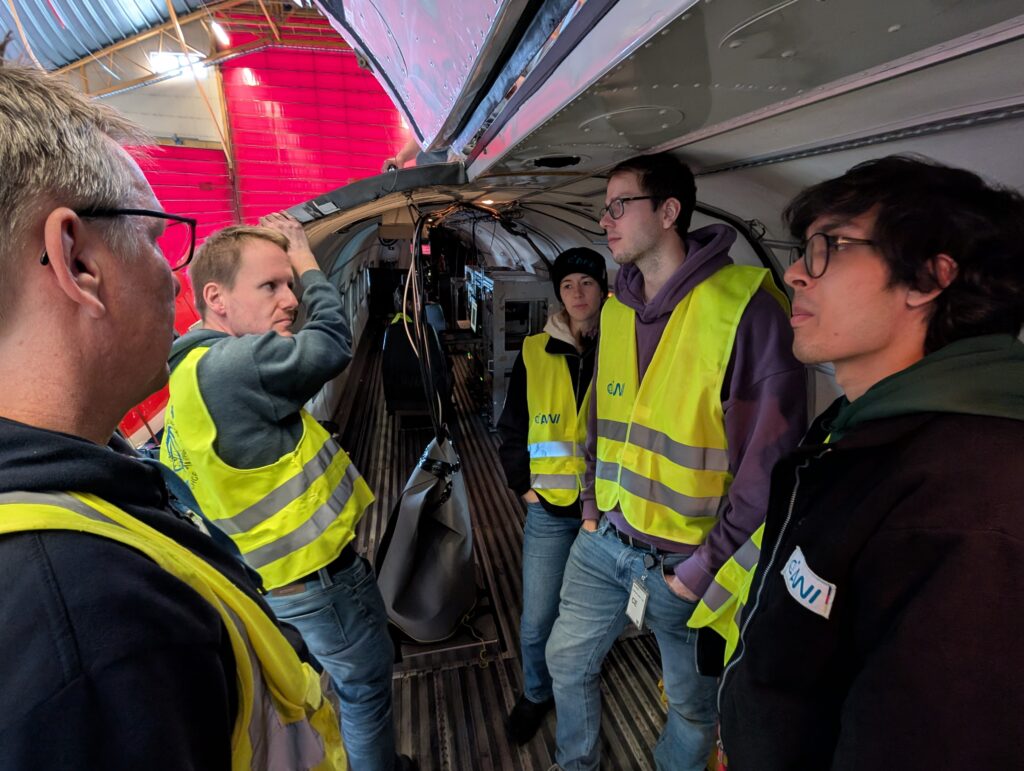Earth’s clouds are still a bit of a mystery, especially in the unique climate of the Arctic.
The region is warming faster than anywhere else on Earth, and it’s important to understand the role that clouds and aerosols are playing in this very cloudy place, where aerosols and clouds interact in complex ways.
That’s one very important reason EarthCARE – The European Space Agency’s Earth Cloud, Aerosol and Radiation Explorer– is flying high above us, equipped with four state-of-the-art instruments to help reveal the secrets still veiled in Arctic clouds.
But satellite data alone is not enough. We must validate EarthCARE’s measurements by flying right through the very atmosphere ESA’s cloud mission is looking down on.
In Spring 2025, the COMPEX-EC (Clouds over cOMPlEX environment – EarthCARE) campaign set off to do just that.
Over two weeks, seven flights, more than 30 flight hours, and quite a few displays of the northern lights, the campaign managed to fly directly underneath EarthCARE on multiple occasions from their snow-laden base in Kiruna, Sweden.
The team passed through some interesting weather along the way, including several cold-air outbreaks, during which cold air interacts with warmer air over the ocean, often forming impressive towers of clouds.

The airport of Kiruna. The hills in the background are parts of the gigantic Kiruna iron ore mine, which are making it necessary to gradually move the whole city by 5km. (Credit: Jonas von Bismarck, ESA).
Thanks to ESA Campaign Manager Jonas von Bismarck, and Mario Mech of the University of Cologne, we get a glimpse of life traversing the polar skies through photos of the team hard at work.
You can also follow their journey – and that of mascot Mika – through an informative blog, which was updated regularly throughout the campaign.
Planning the flights
Every research flight needs to be carefully planned. Before each one, the team maps out possible flight paths on a large screen.
A key challenge is aligning flight tracks with EarthCARE’s orbit to ensure at least 30 minutes of overlapping observations, which requires precise coordination and good timing.
Another critical factor is the weather, so it’s important to check the weather maps to identify optimal conditions. Things such as cloud coverage and wind play a role in deciding when and where flights can take place.

The teams from Universities of Cologne and Leipzig together with ESA’s Jonas von Bismarck study the weather and plan flights for the next two weeks. (Credit: Jonas von Bismarck, ESA).
A special plane and expert crew
Of course, you can’t do a research flight without the vital equipment!
This is the Alfred Wegener Institute’s (AWI) Polar 5 aircraft, which is a bit of a veteran. The plane is a BT-67, which was remanufactured from an old DC-3 aircraft, containing a fuselage that dates all the way back to 1943.

The AWI Polar 5 research aircraft on the apron in front of the Arena Arctica (hangar) in Kiruna. (Image Credit: Jonas von Bismarck, ESA).
It has a special landing set up, which allows it to take off and land in even the most remote regions. Being so specialised, it requires a specialised crew of pilots and engineers from the Canadian company Kenn Borek Air to fly it.

The pilot Kyle McLenaghan from Kenn Borek Air is looking forward to the flight. (Credit: Jonas von Bismarck, ESA).
Preparing the plane
In the hangar, the team performs instrument calibration for the radiometer, a procedure that needs to be done once a while.
It’s done using two types of calibration devices, an integrating sphere for irradiance calibration and a lamp for the radiance calibration.
In addition to the radiation measurements, the Polar 5 was equipped with spectrometers, a radar, a lidar, and a dropsonde system, all working together to validate their spaceborne counterparts on EarthCARE.

Calibrating the radiation instrumentation in the Arena Arctica. (Credit: Jonas von Bismarck, ESA).
In the air
There’s no reclining the chair and kicking back to watch a movie on a research flight.

Final briefing of the scientific crew before Polar 5 gets out the hangar. (Image credit: Jonas von Bismarck, ESA).
The data needs to be carefully watched.
These campaigns take many months of planning, many hours of intense work – and even more planning – once it finally arrives, so you certainly do not want to miss the measurements once you are on EarthCARE’s track.

Analysing data on the Polar 5, during a flight. (Image credit: Jonas von Bismarck, ESA).
The Polar 5 and EarthCARE in perfect alignment
It’s pretty cool to be able to spot our Polar 5 aircraft as it flies directly underneath the satellite above from EarthCARE’s cloud profiling radar data.
In the image below you can see the radar echo of the Polar 5, which is highlighted in the green circle. You can’t align much better than that!

The radar echo of the Polar 5 in EarthCARE cloud profiling radar (CPR) data, indicated by the green circle. (Credit: Lars van Gelder).
“The time in Kiruna was amazing,” says Mario. “COMPEX-EC was a full success. During almost every flight we could achieve a perfect match with EarthCARE.”
It’s the perfect image to wrap up a campaign that will go a long way to helping EarthCARE understand Arctic clouds, and we can’t wait to crunch the data and present it to the community later this year.
Thanks to the COMPEX-EC team, which involved scientists from the University of Cologne and the University of Leipzig, for helping with this blog. Follow their activities on their campaign blog.








Discussion: no comments